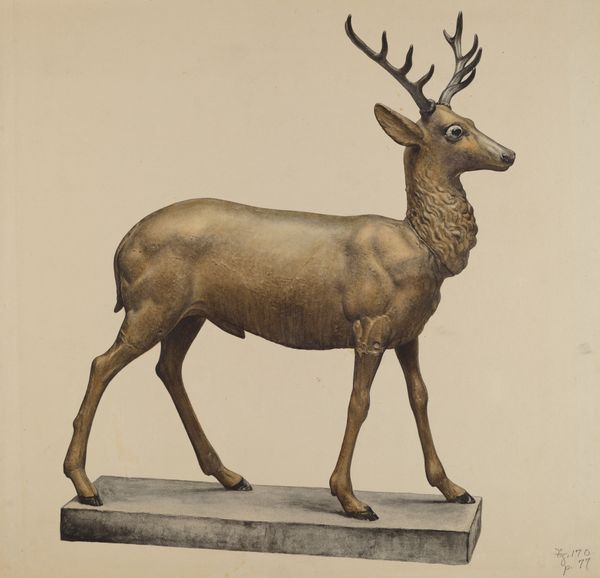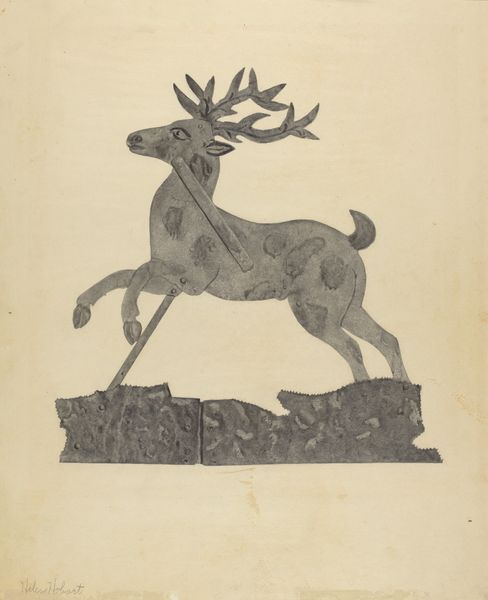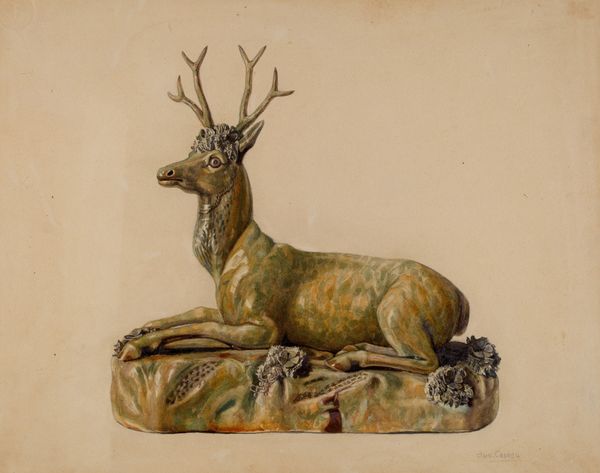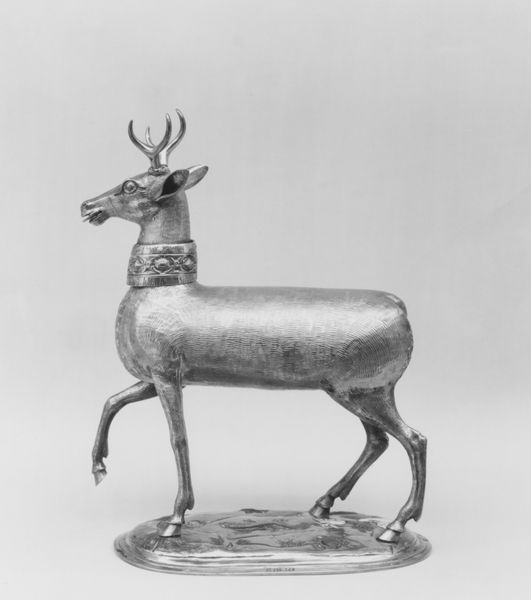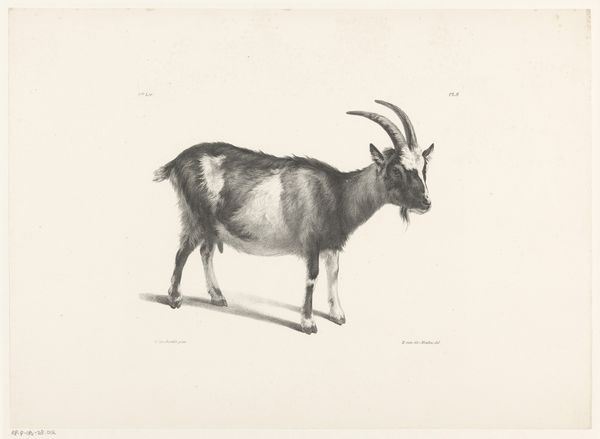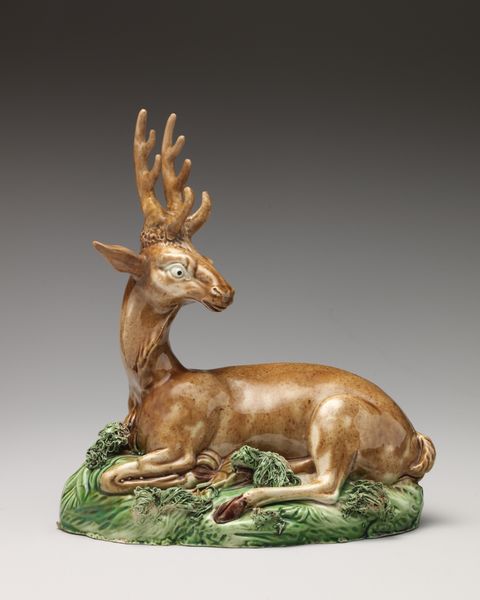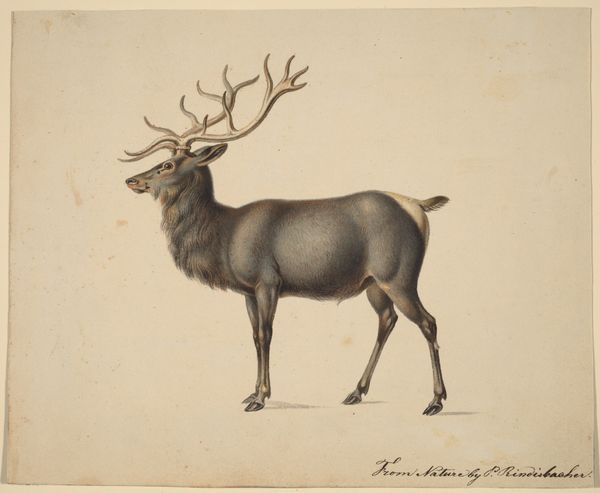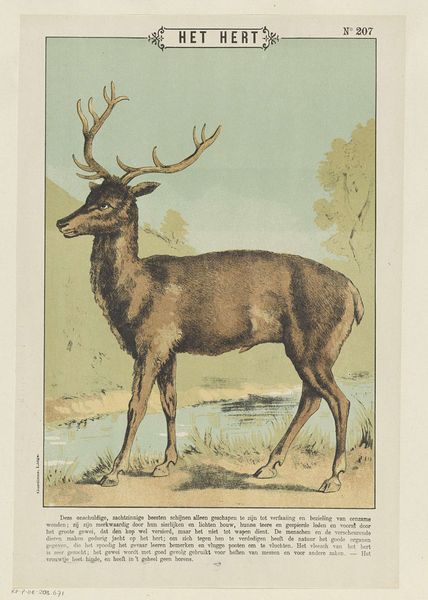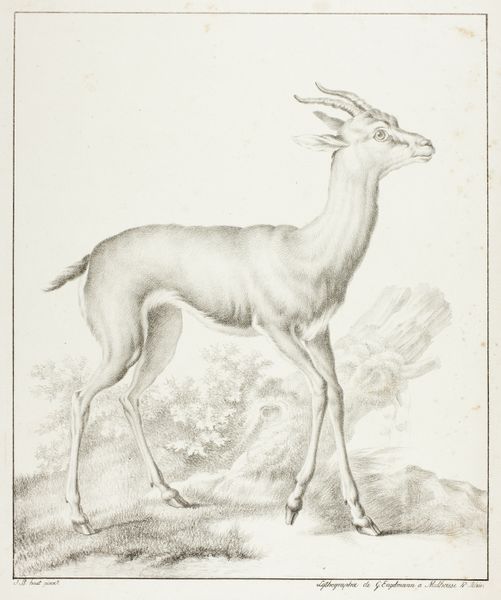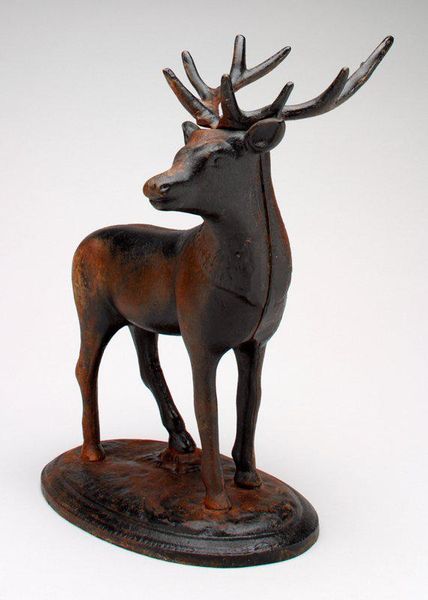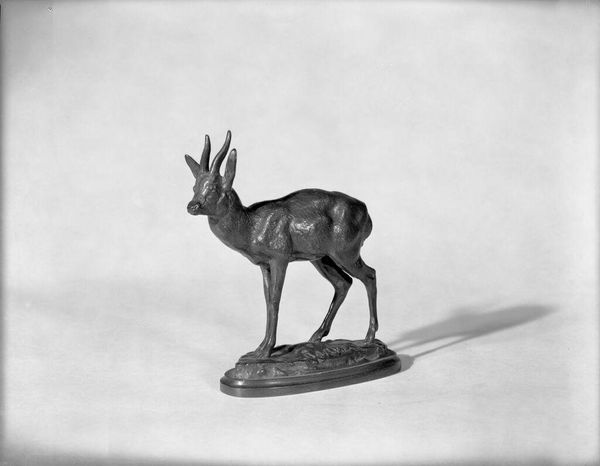
bronze, sculpture
#
sculpture
#
bronze
#
figuration
#
sculpture
#
realism
Dimensions: overall: 48.8 x 36.1 cm (19 3/16 x 14 3/16 in.)
Copyright: National Gallery of Art: CC0 1.0
Curator: Let's turn our attention to Lucille Chabot's "Cast Iron Goat," a sculpture crafted in 1940. What strikes you upon seeing it? Editor: Strength, certainly, yet tempered with an unexpected vulnerability in the stance. Its physicality is arresting; that muscularity conveyed so starkly. Curator: Indeed. The artist presents the goat, almost heraldic, poised atop a minimal rectangular base. The materiality is interesting. Although titled “Cast Iron Goat,” it has also been referenced as being bronze. This adds layers to our perception of the work. The play of light on the figure accentuates the form's inherent geometry and creates a dynamic interplay. Editor: Goats have long been totemic, associated with fertility, virility, and even the Dionysian. Do you see that echoed here? The animal seems imbued with potent, almost untamed energy, even confined as it is to this sculptural form. The curves of the horns against the rigidity of its body capture something primal. Curator: Precisely! One could argue Chabot uses the familiar symbol of the goat to explore broader themes—perhaps of resilience in the face of hardship, considering the period. The goat, so grounded, evokes endurance, persistence. And the formal elements—the line, the mass, the balance—they all conspire to convey this reading. Editor: A captivating piece. It reveals how a seemingly simple form can hold such a density of symbolic and material information. Curator: It certainly presents fertile ground for considering the animal within art. Thank you. Editor: Thank you, it's given me a deeper appreciation for these artistic representations of nature.
Comments
No comments
Be the first to comment and join the conversation on the ultimate creative platform.
